dannana height 16 1/4in (41.3cm) Provenance Helena Rubinstein, Paris and New York Sotheby's, Parke-Bernet, New York, April 21, 1966, Lot 85 Lance Entwistle, London and Paris American Private Collection, acquired in 1994 'Based on the French ethnographer Marcel Griaule's 1938 publication of photographs of a mask from Ireli, this wood mask is a predatory human, specifically a hunter. Noteworthy traits include the dark encrusted surface, the flat face and the projecting mouth that originally had millet-stalk teeth. The most distinctive feature is its nose, which Griaule described as a "human profile." It resembles the top of an animal head with a long snout or jaw. Such a mask would be worn by a man more than 20 years old, the senior age-group in the Awa society. His costume would have been an ordinary tunic covered with leaves, combining domesticated and wild materials, and he would have carried a sword, a lance and a leather bag with medicines. In a pantomime rather than a dance, dannana aggressively hunts another masquerader, the rabbit, but fails to catch him. The rabbit in this context is the trickster, intelligent and cunning, able to defy man. The pairing of hunter and rabbit may refer to the myth recounting how the first hunter mask was created. A skilled hunter killed an antelope, and both the rabbit and the hyena asked for a share. After much discussion and some chasing, the rabbit tells the hunter that the hyena attacked him, whereupon the hunter kills the hyena. It should be noted that the Dogon consistently describe the hyena in negative terms: as an unprovoked attacker, ugly and smelly, and with a repulsive voice. In the myth, the hunter tells his father about killing the antelope and the hyena, and his father dies. The hunter perceives his father's death not as a coincidence but as being caused by the killing of the two animals. This is in keeping with the virtually universal African belief that all illnesses and deaths have more than physical causes. The Dogon myth concludes with the hunter carving masks. Griaule infers that the hunter wanted to protect himself from the spirits of the animals he killed. The other human predatory masks--a foreign warrior, a sorcerer and a mythic ancestor--also have associations with death and disorder.' (Smithsonian National Museum of African Art, WEB, nd.) This highly abstract mask has a very mysterious presence, the flat facial plane pierced with triangular-shaped eyes, rounded at the top and squared along the edges with a slight lip extending out from the rear portion; on top an animal motif carved with a spherical head and long snout (possibly an elephant) connected to the nose of the mask, protuberant lips with mouth open revealing holes for teeth once inset; dark brown encrusted patina with remnants of applied antelope fur on the face, wear indicative of significant age and cultural use.
dannana height 16 1/4in (41.3cm) Provenance Helena Rubinstein, Paris and New York Sotheby's, Parke-Bernet, New York, April 21, 1966, Lot 85 Lance Entwistle, London and Paris American Private Collection, acquired in 1994 'Based on the French ethnographer Marcel Griaule's 1938 publication of photographs of a mask from Ireli, this wood mask is a predatory human, specifically a hunter. Noteworthy traits include the dark encrusted surface, the flat face and the projecting mouth that originally had millet-stalk teeth. The most distinctive feature is its nose, which Griaule described as a "human profile." It resembles the top of an animal head with a long snout or jaw. Such a mask would be worn by a man more than 20 years old, the senior age-group in the Awa society. His costume would have been an ordinary tunic covered with leaves, combining domesticated and wild materials, and he would have carried a sword, a lance and a leather bag with medicines. In a pantomime rather than a dance, dannana aggressively hunts another masquerader, the rabbit, but fails to catch him. The rabbit in this context is the trickster, intelligent and cunning, able to defy man. The pairing of hunter and rabbit may refer to the myth recounting how the first hunter mask was created. A skilled hunter killed an antelope, and both the rabbit and the hyena asked for a share. After much discussion and some chasing, the rabbit tells the hunter that the hyena attacked him, whereupon the hunter kills the hyena. It should be noted that the Dogon consistently describe the hyena in negative terms: as an unprovoked attacker, ugly and smelly, and with a repulsive voice. In the myth, the hunter tells his father about killing the antelope and the hyena, and his father dies. The hunter perceives his father's death not as a coincidence but as being caused by the killing of the two animals. This is in keeping with the virtually universal African belief that all illnesses and deaths have more than physical causes. The Dogon myth concludes with the hunter carving masks. Griaule infers that the hunter wanted to protect himself from the spirits of the animals he killed. The other human predatory masks--a foreign warrior, a sorcerer and a mythic ancestor--also have associations with death and disorder.' (Smithsonian National Museum of African Art, WEB, nd.) This highly abstract mask has a very mysterious presence, the flat facial plane pierced with triangular-shaped eyes, rounded at the top and squared along the edges with a slight lip extending out from the rear portion; on top an animal motif carved with a spherical head and long snout (possibly an elephant) connected to the nose of the mask, protuberant lips with mouth open revealing holes for teeth once inset; dark brown encrusted patina with remnants of applied antelope fur on the face, wear indicative of significant age and cultural use.

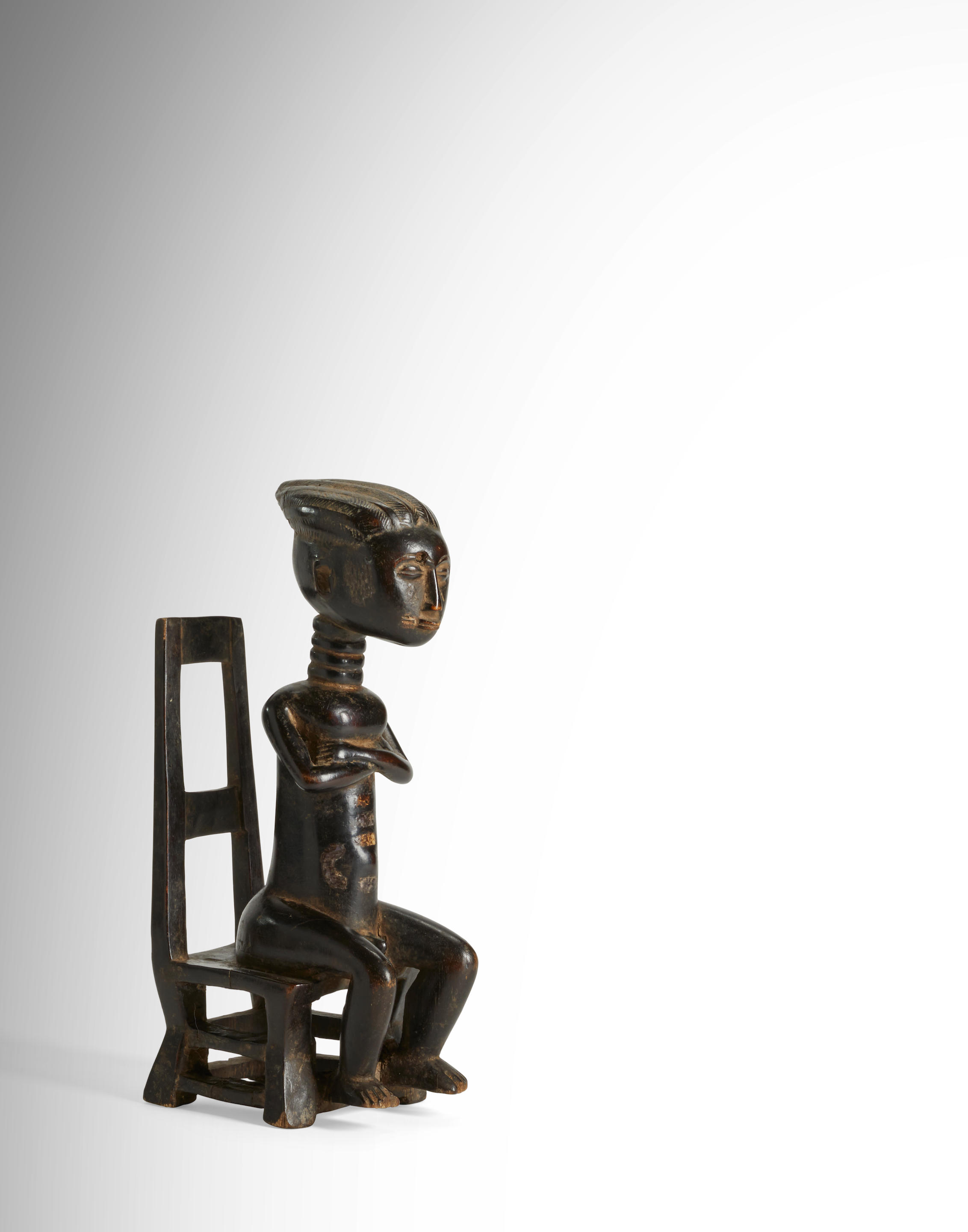

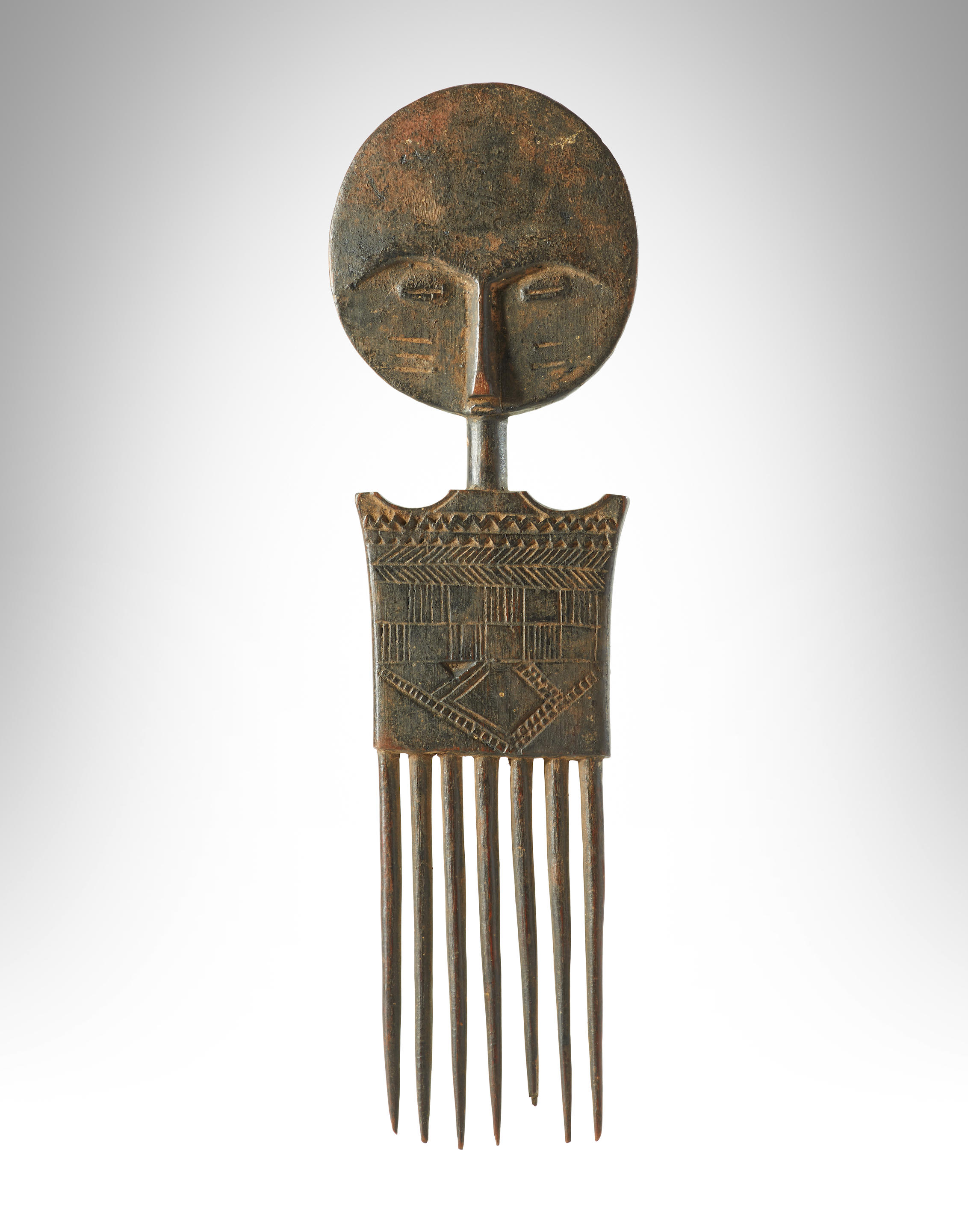
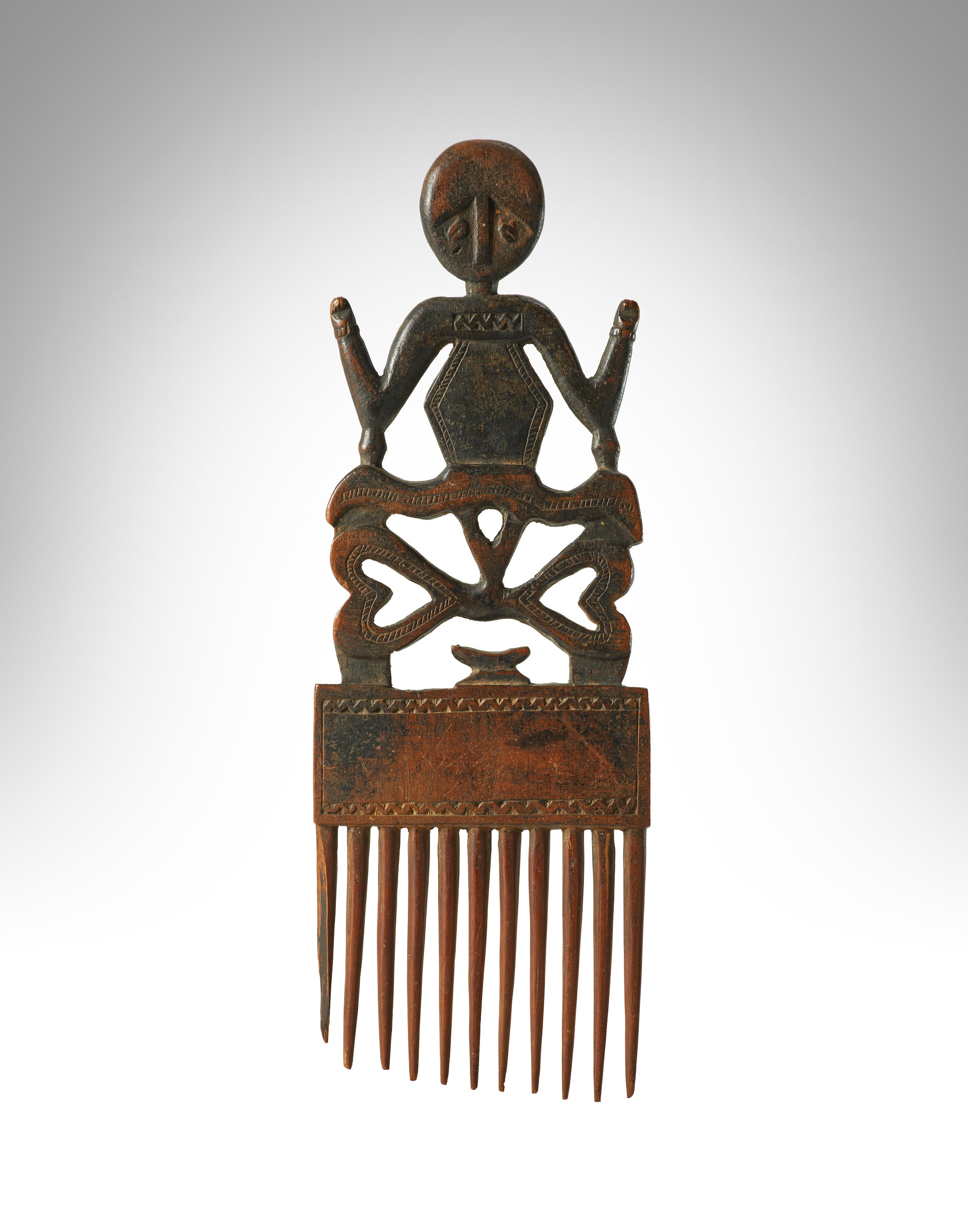
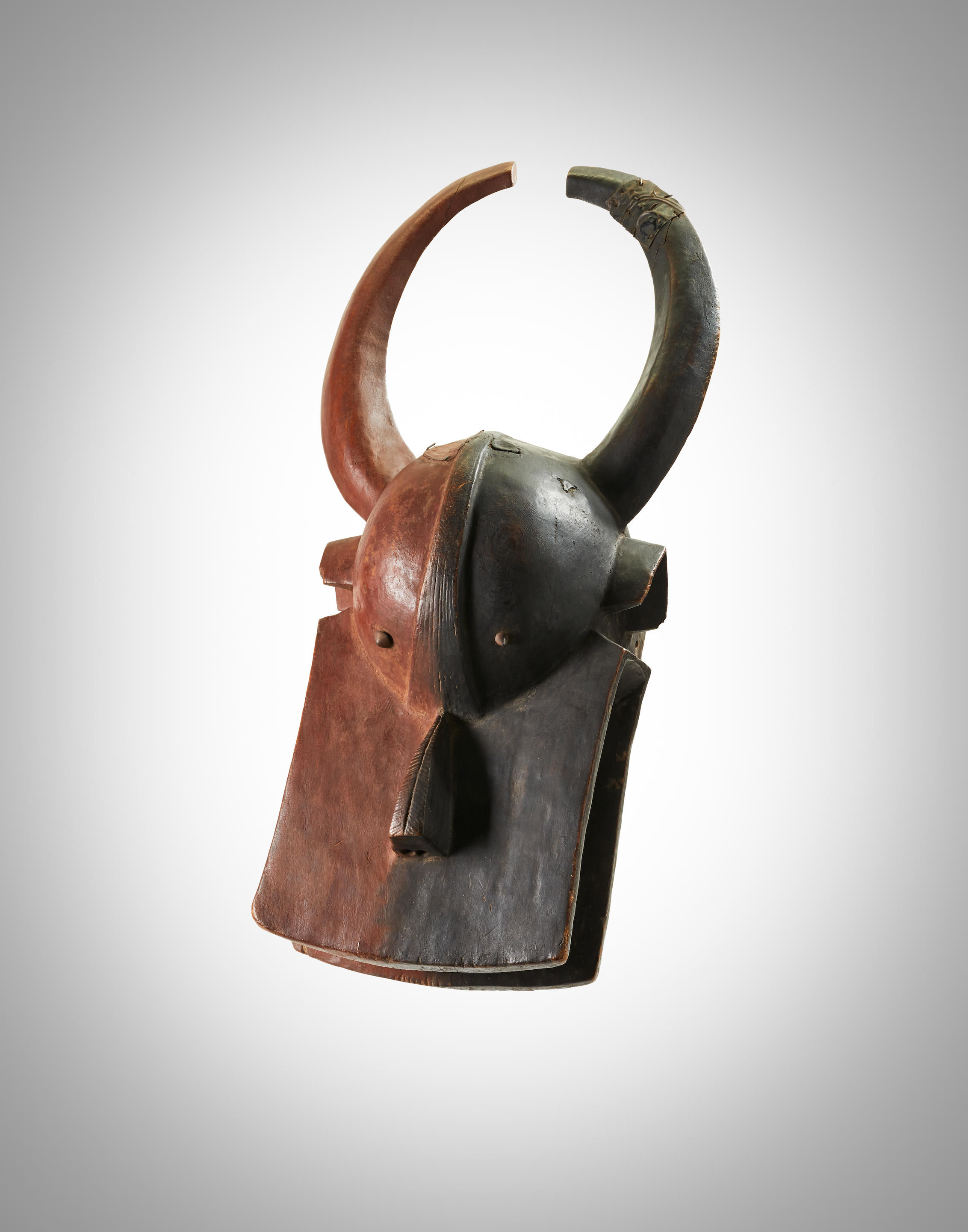
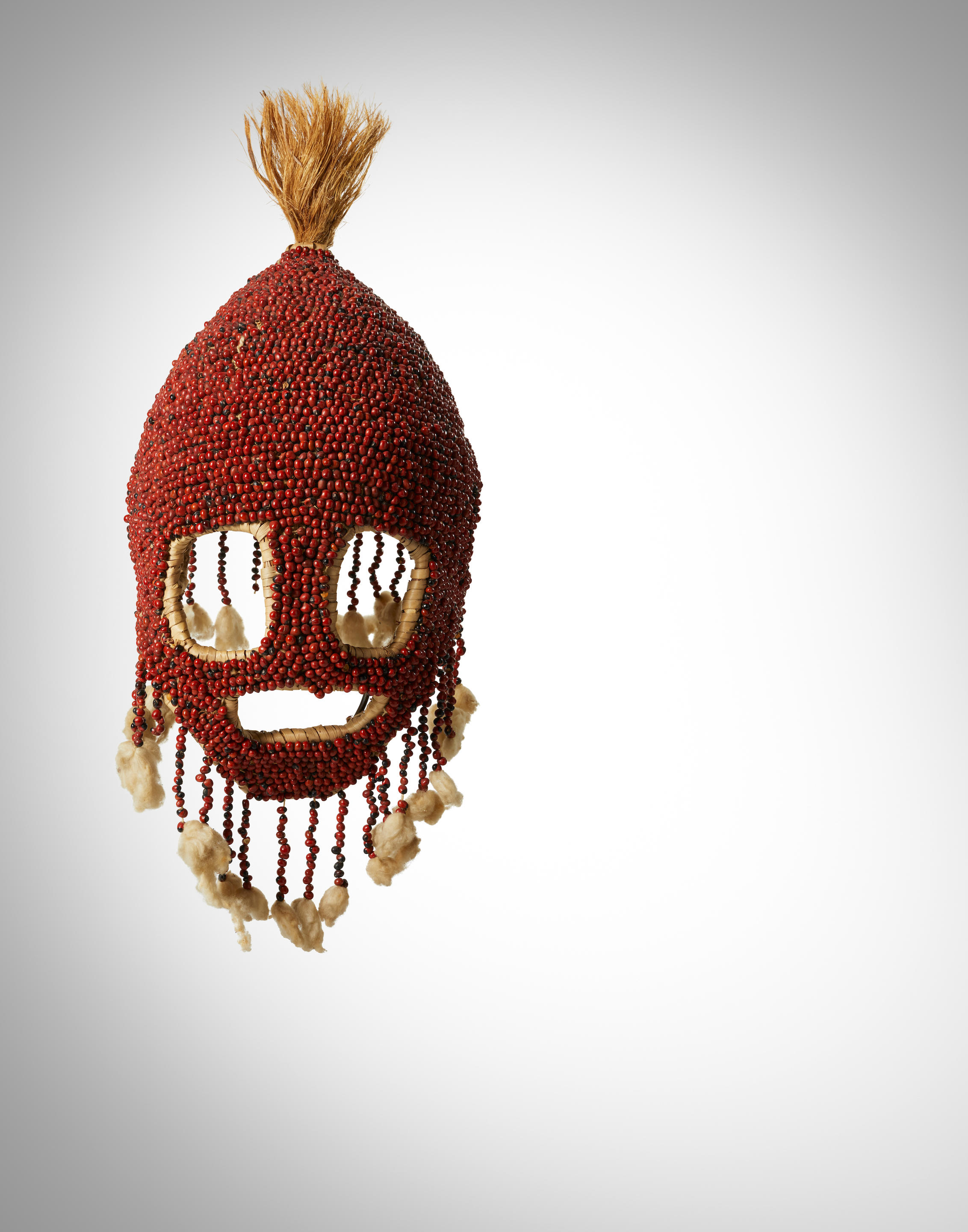
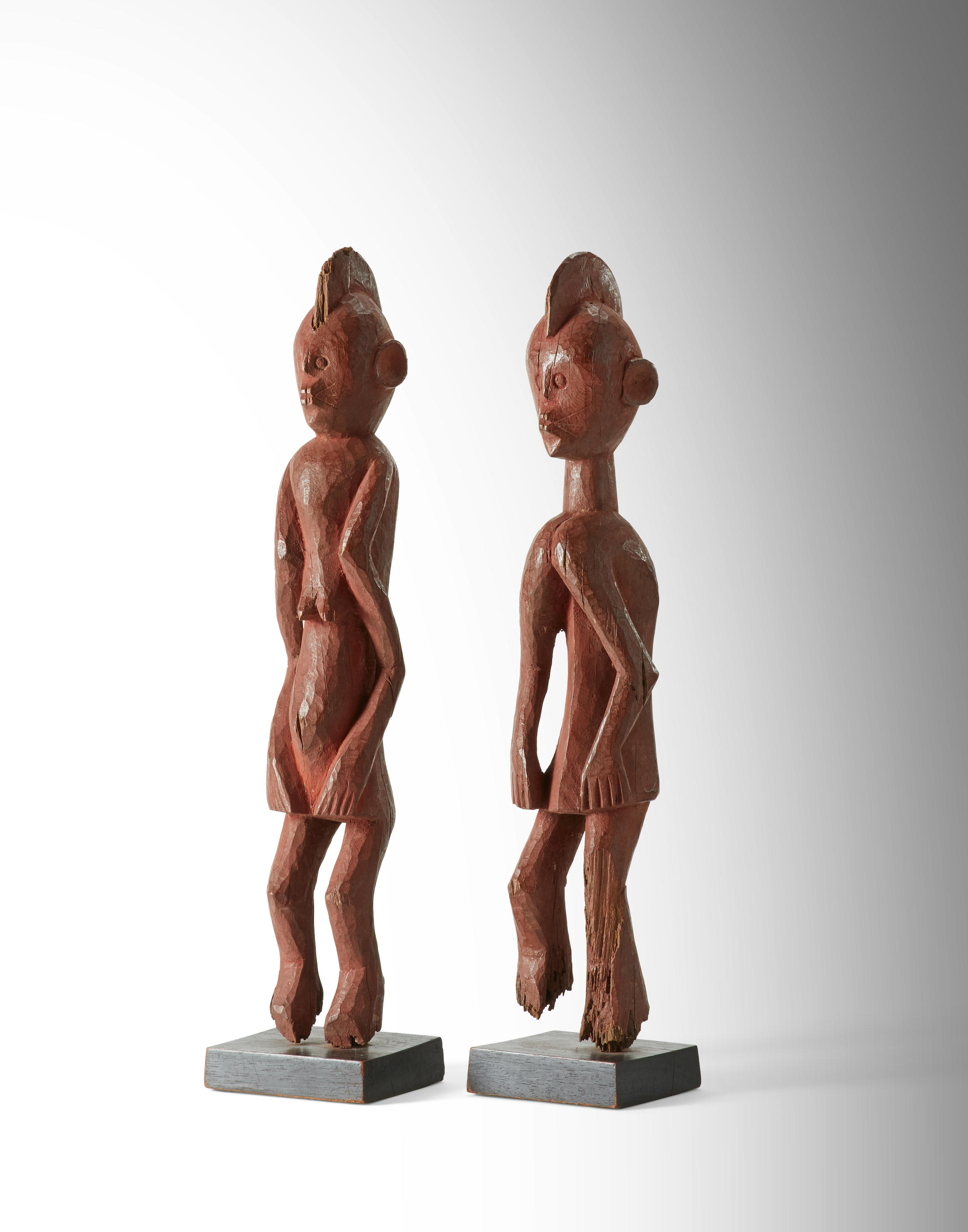
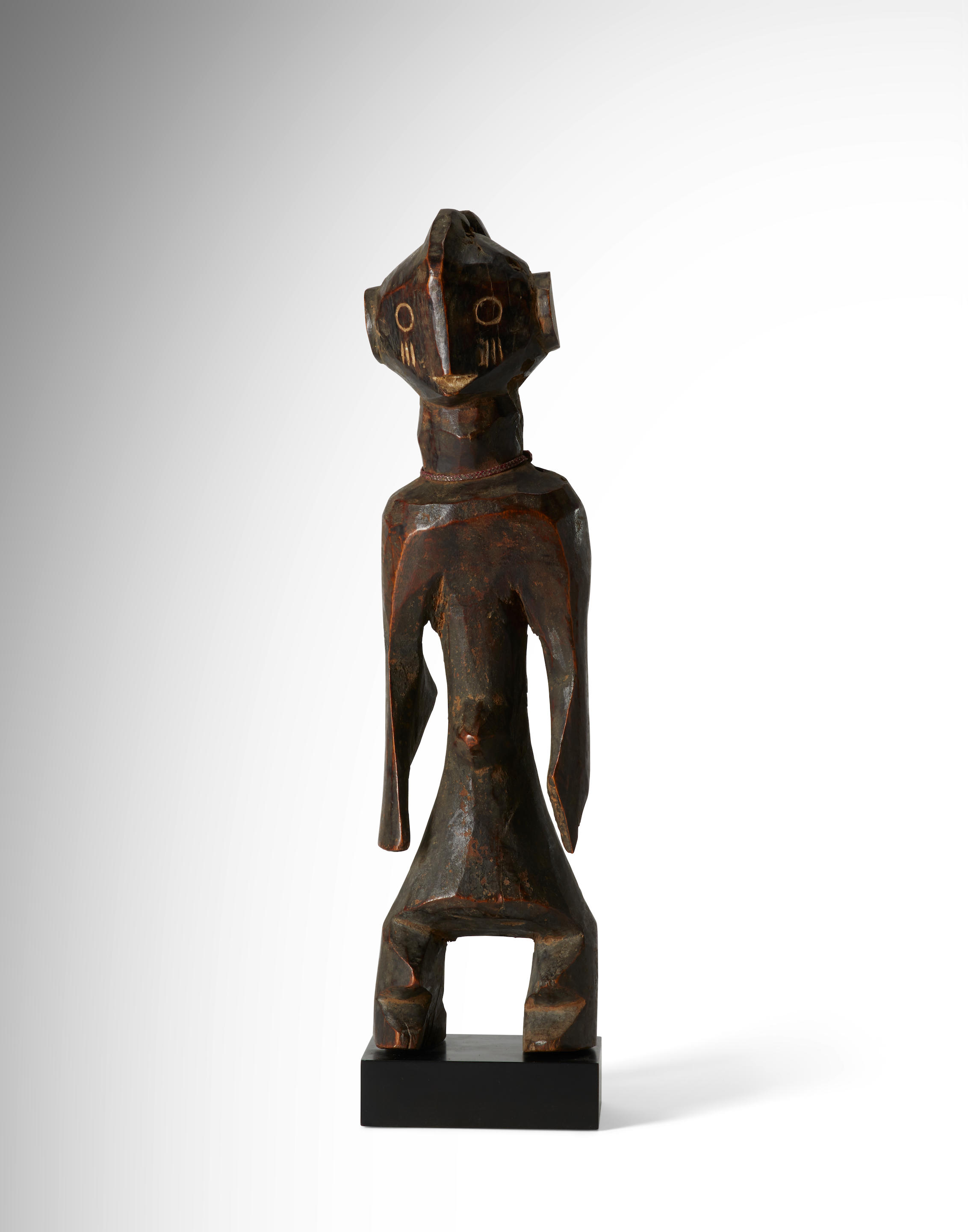
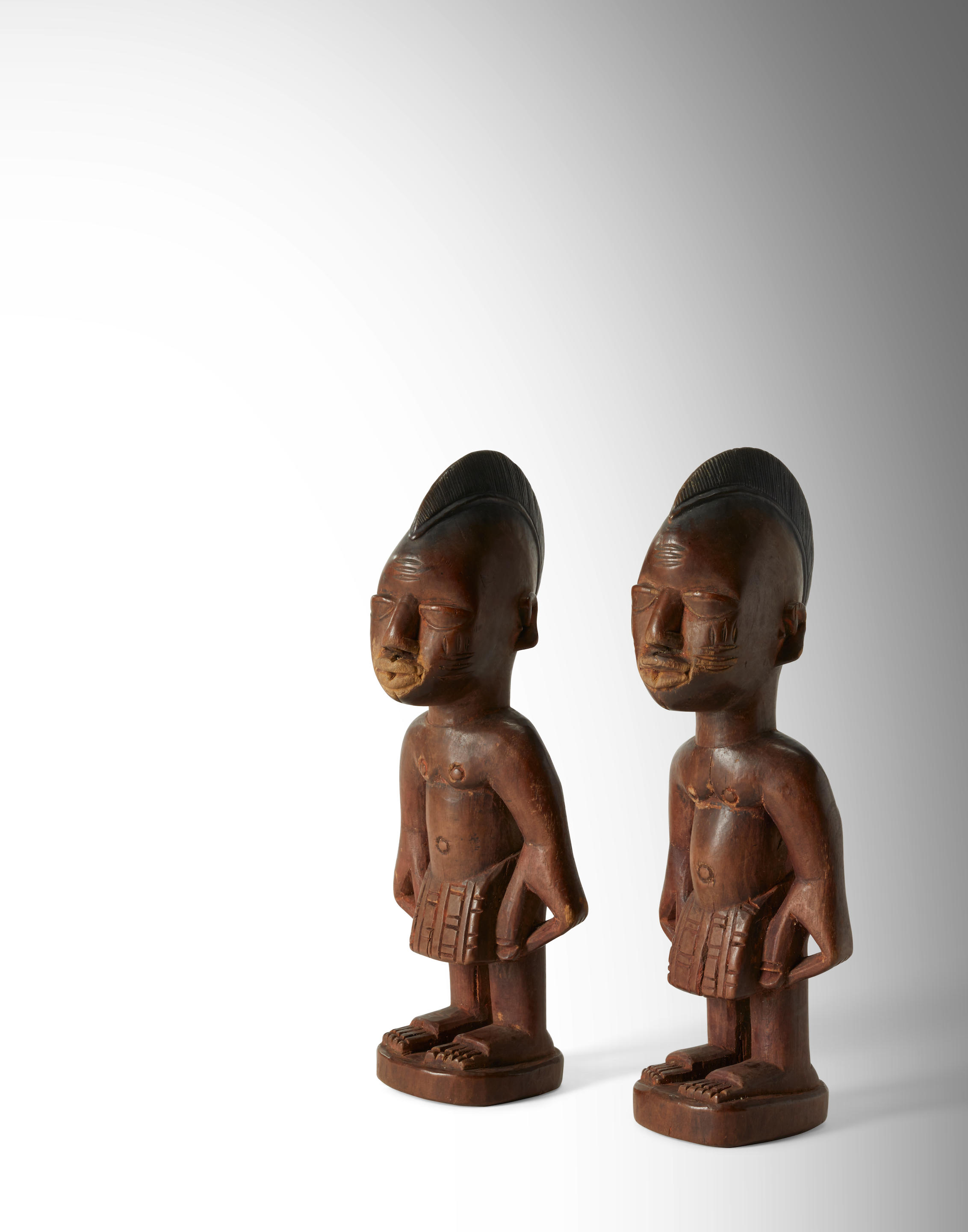

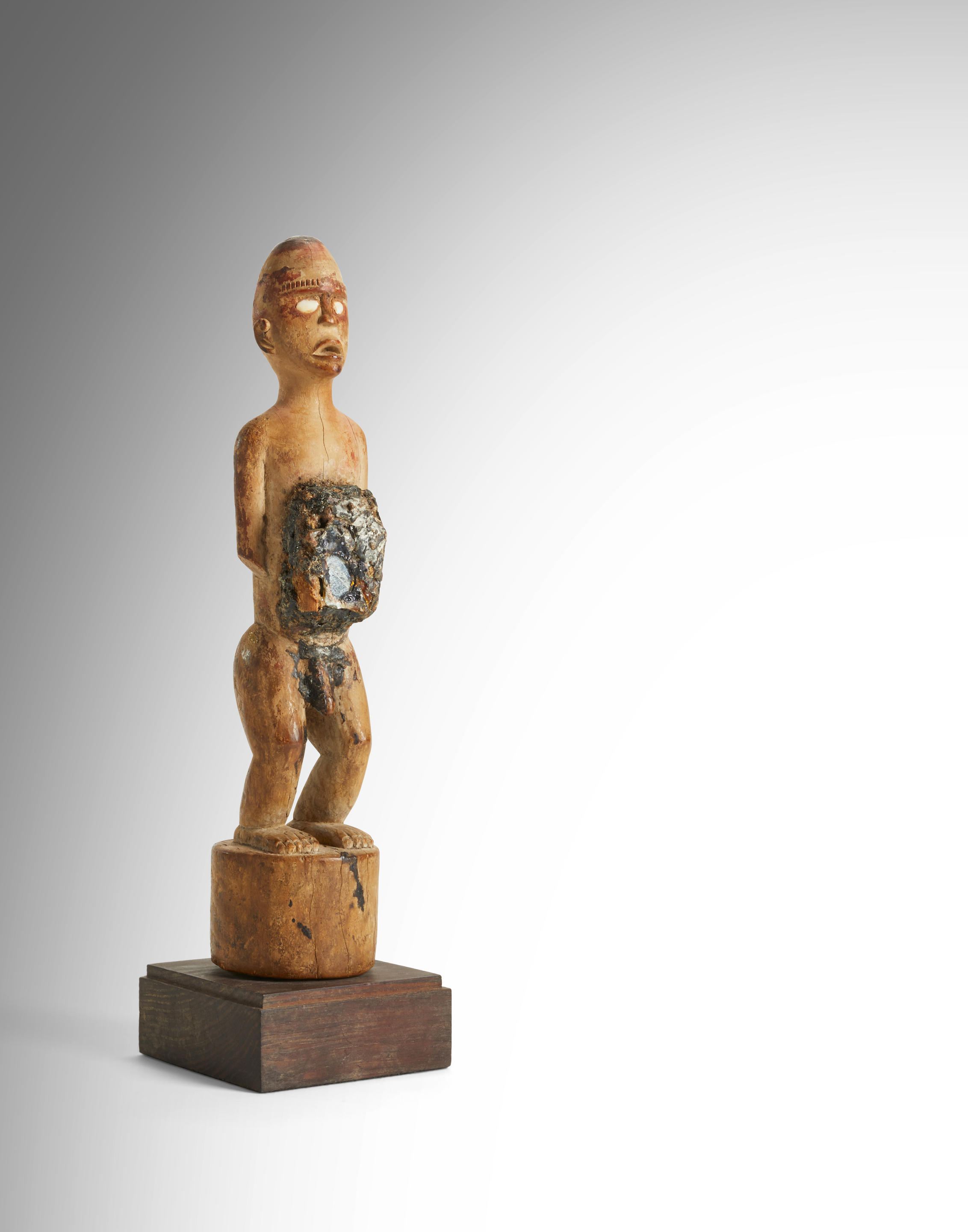
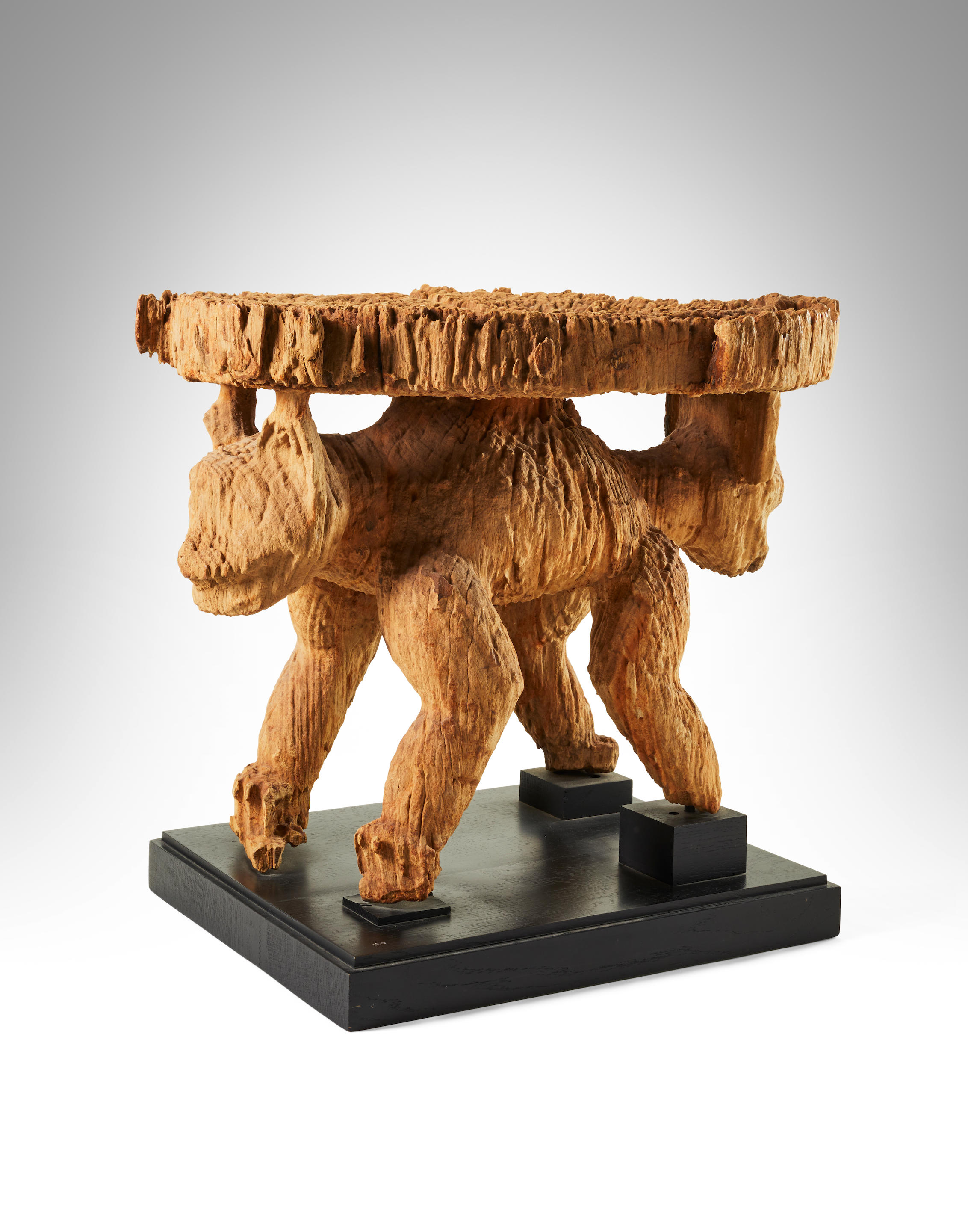
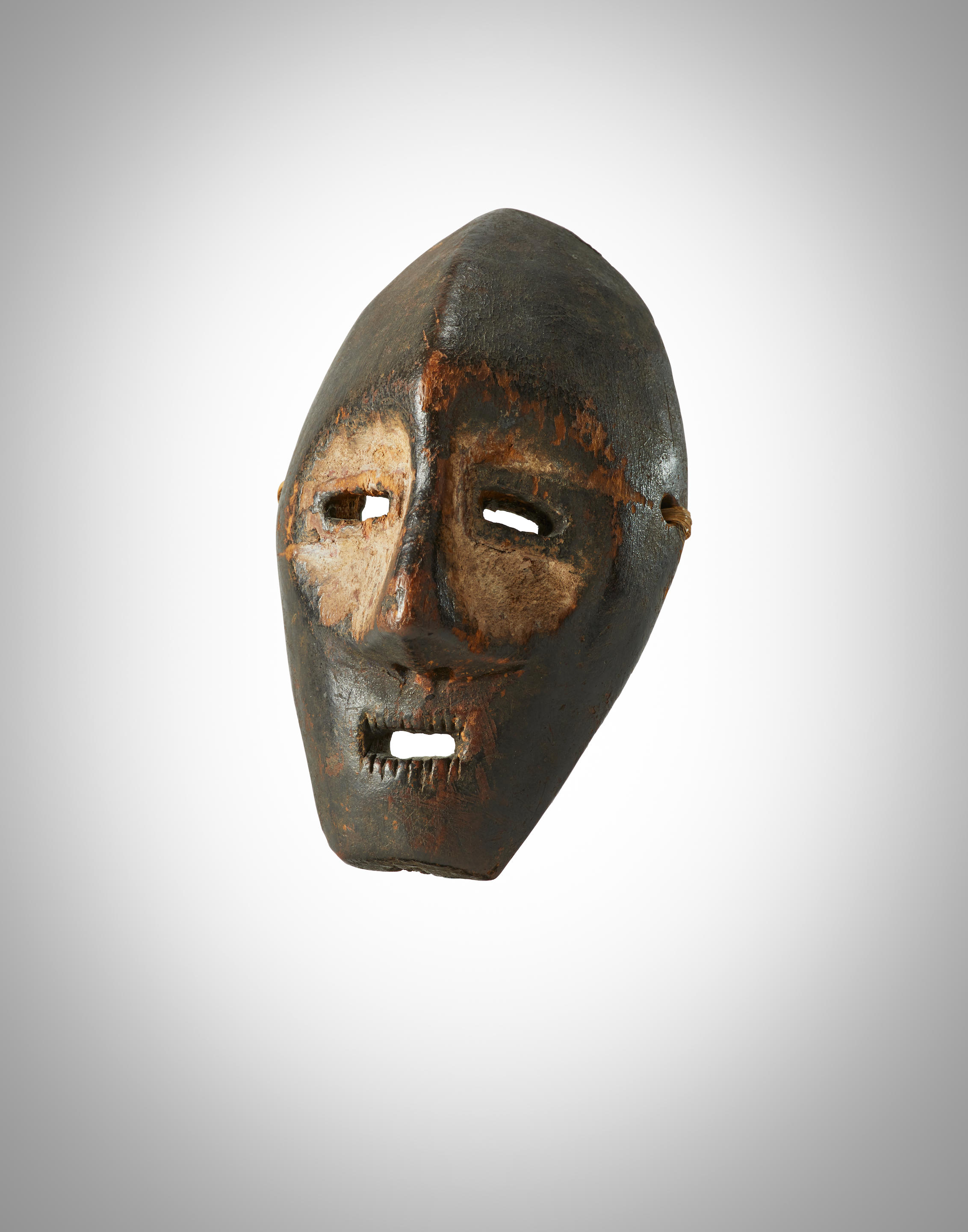
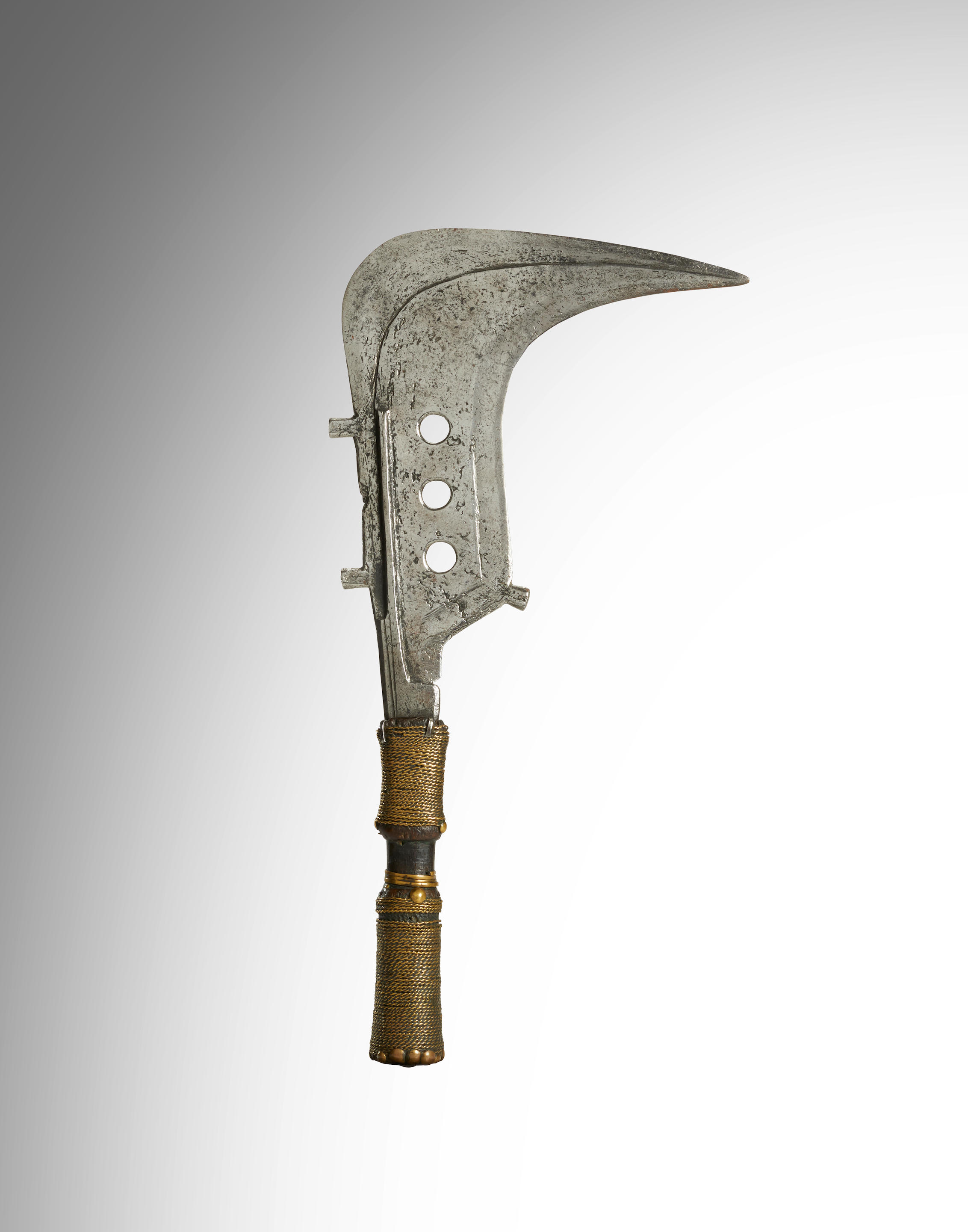
Testen Sie LotSearch und seine Premium-Features 7 Tage - ohne Kosten!
Lassen Sie sich automatisch über neue Objekte in kommenden Auktionen benachrichtigen.
Suchauftrag anlegen